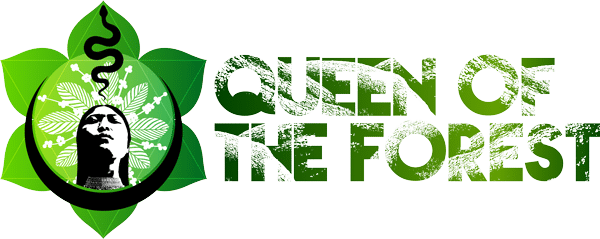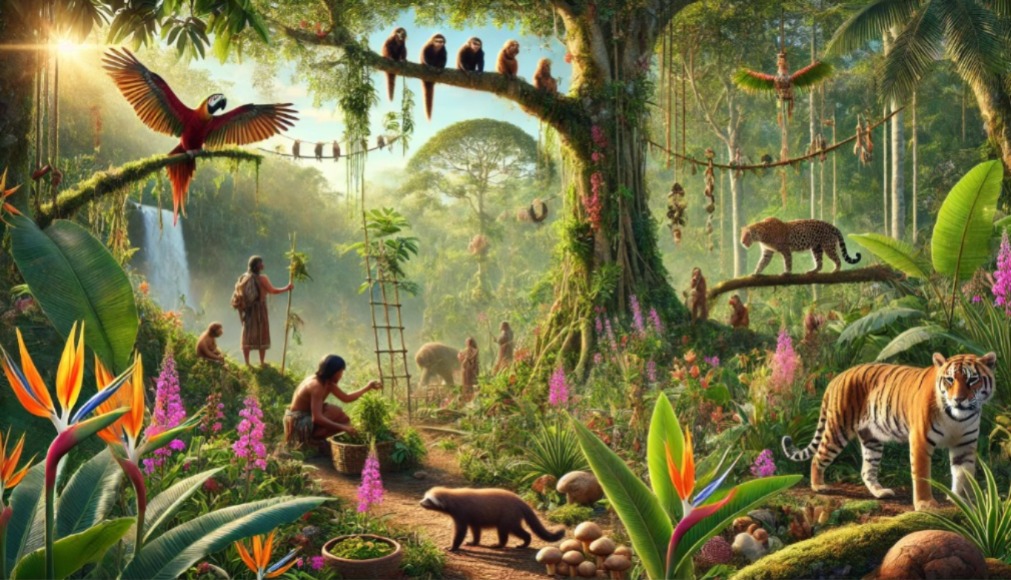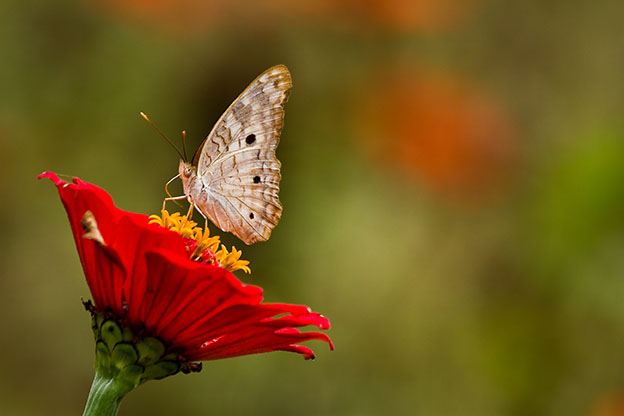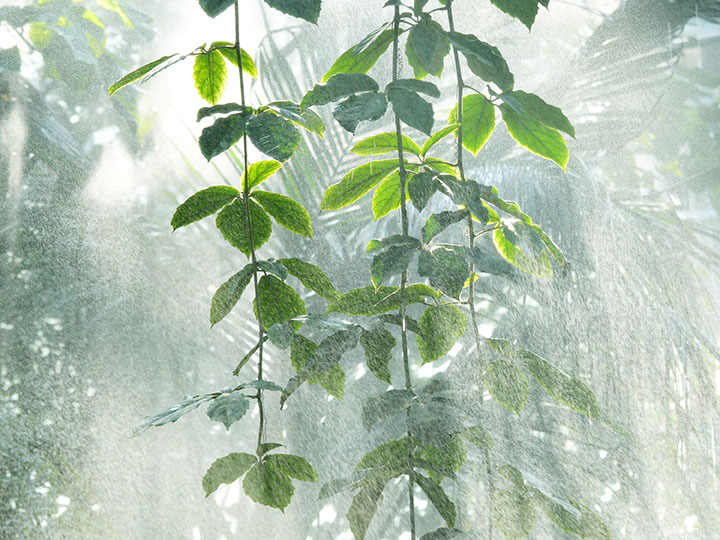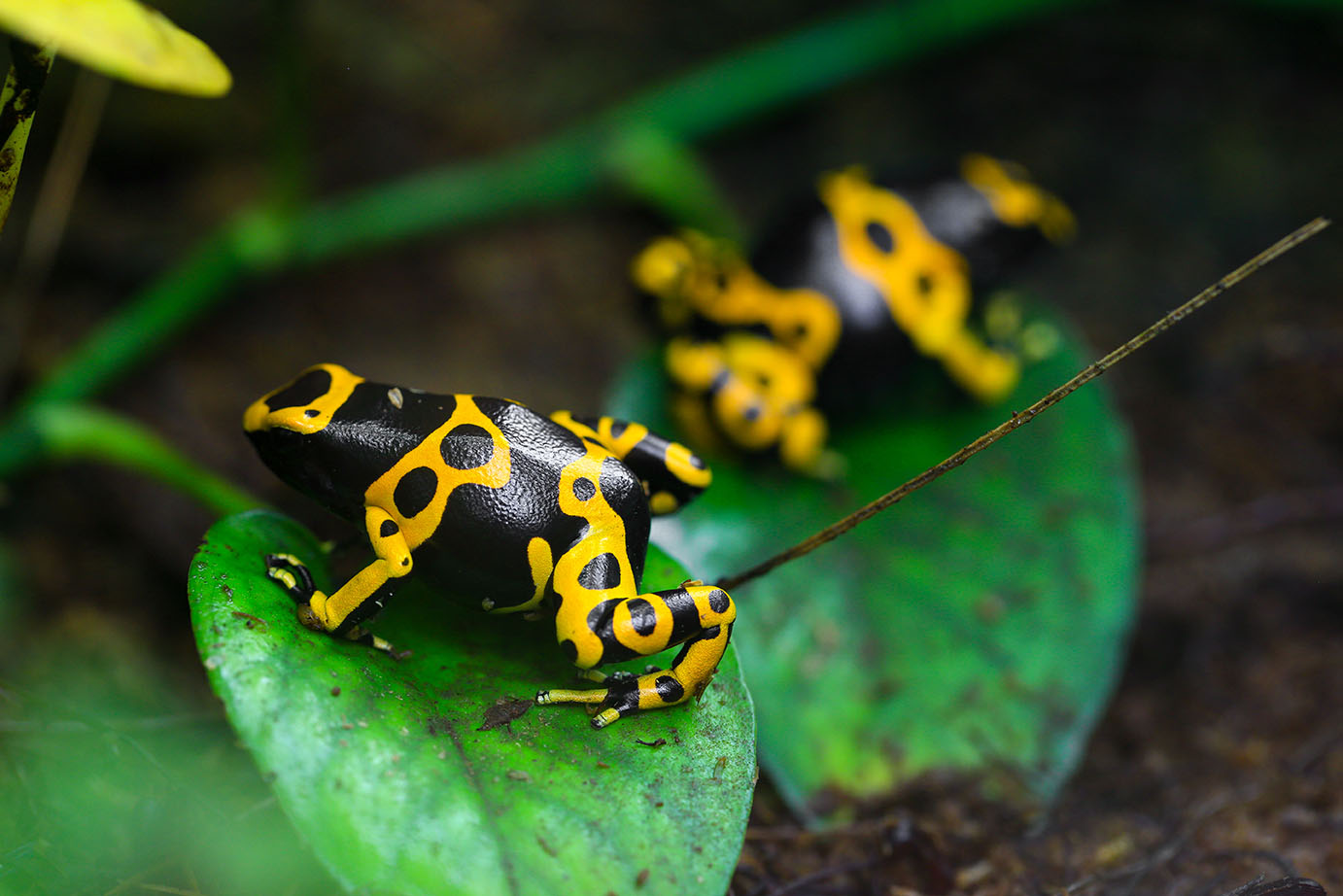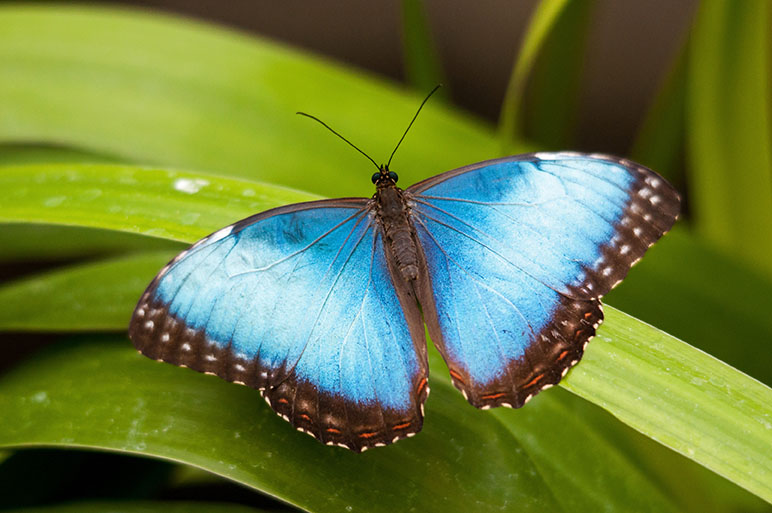Amazon Forest Plants, FOREVER THE FOREST
The Diversity of Plants in the Amazon Rainforest and Their Medicines
An Ancestral Heritage of Indigenous Tribes and Local Fauna
The Amazon Rainforest is one of the most biodiverse regions on the planet, home to thousands of plant species, many of which have medicinal properties known and used by indigenous peoples for centuries. In addition to being an essential source of health and spirituality for humans, these plants play crucial roles in ecosystems, interacting with local fauna in complex and symbiotic relationships.
The Richness of Medicinal Plants in the Amazon
The Amazon contains an impressive number of plants with medicinal properties. Among the most well-known are:
- Ayahuasca (Banisteriopsis caapi and Psychotria viridis): Used in spiritual and therapeutic ceremonies by tribes such as the Huni Kuin and Ashaninka, Ayahuasca promotes profound experiences of self-discovery and emotional healing. Its chemical components, such as harmaline alkaloids and DMT, work synergistically to expand consciousness.
- Jaborandi (Pilocarpus spp.): A source of pilocarpine, an alkaloid used in the treatment of glaucoma and other eye conditions. This plant is traditionally used by indigenous people to treat respiratory problems.
- Cat’s Claw (Uncaria tomentosa): Widely recognized for its anti-inflammatory and immune-modulating properties. Indigenous peoples use it to treat arthritis, muscle pain, and gastrointestinal diseases.
- Andiroba (Carapa guianensis): Its seeds produce an oil with anti-inflammatory properties and insect-repelling qualities. Tribes use it to treat wounds, infections, and muscle pain.
- Açaí (Euterpe oleracea): Though widely known as a food, açaí is also used medicinally to strengthen the immune system and combat fatigue.
Traditional Use by Indigenous Tribes
The indigenous peoples of the Amazon possess deep knowledge of plants and their applications. This knowledge is passed down through generations, often through myths, stories, and ceremonial practices. Each plant carries not only physical properties but also spiritual significance. For example:
- The Yanomami use a wide variety of herbs to treat fevers, infections, and even spiritual ailments.
- The Huni Kuin associate many plants with their origin myths, such as the sacred rapé, which is prepared with tobacco and tree ashes for healing and spiritual connection.
- The Tukano believe plants have “spiritual owners” who must be respected for their medicinal properties to be effective.
Ceremonies involving Ayahuasca, the use of Sananga (eye drops made from a root that clears both physical and spiritual vision), and Mapacho (natural tobacco used for cleansing and protection) are emblematic examples of medicinal use integrated with spiritual practices.
Interaction with Fauna
The relationship between plants and animals in the Amazon is equally fascinating. Various fauna species consume these plants, playing key roles in seed dispersion and ecological balance. Examples include:
- Sloths (Bradypus spp.): Consume leaves from trees like embaúba, which have calming properties and aid their characteristically slow digestion.
- Capuchin Monkeys (Sapajus spp.): Often seen eating medicinal fruits such as andiroba and murici, helping to disperse the seeds of these species.
- Jaguars (Panthera onca): Known to chew the roots of certain medicinal plants like Tabernaemontana, believed to use these plants for purification and parasite treatment.
- Birds like toucans: Consume fruits such as açaí and buriti, spreading seeds over long distances and aiding in forest regeneration.
- Butterflies and bees: Pollinate plants such as copaíba and guaraná, essential for ecological balance and the production of natural remedies.
Challenges and the Importance of Preservation
Despite its abundance, the Amazon’s biodiversity is under constant threat due to deforestation, fires, and predatory exploitation. With the loss of forests, species still unknown to science vanish, along with invaluable indigenous knowledge.
Preserving the forest is not only an environmental issue but also a cultural and medicinal one. Supporting indigenous communities and their sustainable practices is essential to ensure that this legacy of healing continues to benefit the world.
The diversity of medicinal plants in the Amazon is a testament to the power of nature and the ancestral wisdom of indigenous peoples. From Ayahuasca to andiroba oil, these plants offer not only physical treatments but also paths to spirituality and ecological balance. Recognizing and respecting the interconnections between plants, animals, and humans in the rainforest is essential to protect this irreplaceable heritage.
